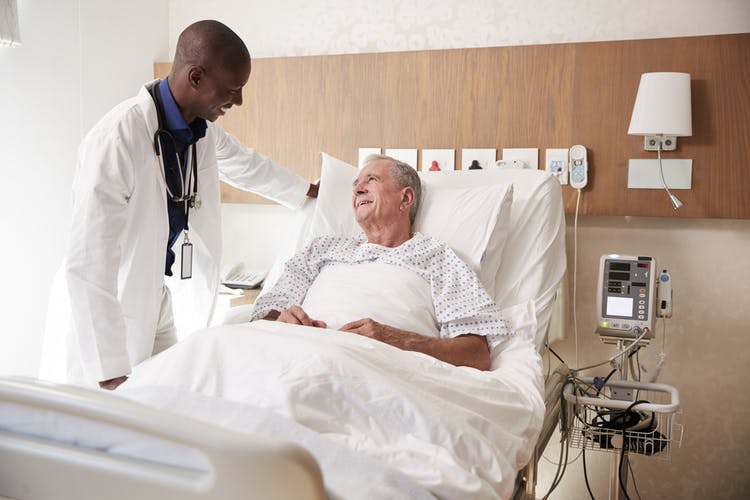In healthcare, the care of bedridden patients demands the utmost attention, especially in wound management.
This blog explores the intricacies of "Wound Care for Bedridden Patients," emphasizing tailored strategies, the impact of immobility on skin health, and the necessity for comprehensive wound protocols.
Understanding Pressure Ulcers: Wound Care for Bedridden Patients
Pressure ulcers, a prevalent concern among bedridden patients, progress through distinct stages, each demanding specific wound care approaches.
A. Stages of Pressure Ulcers:
Pressure ulcers evolve from mild skin redness (Stage I) to severe tissue damage (Stage IV). Each stage requires a different type of targeted care to facilitate optimal healing.
B. Causes and Risk Factors:
Immobile patients face heightened susceptibility to pressure ulcers. Contributing factors include prolonged pressure on specific body parts, friction, and shear forces. Awareness of these factors is crucial for effective prevention.
C. Impact on Patient Health and Quality of Life:
Beyond physical discomfort, pressure ulcers significantly impact bedridden patients' overall health and quality of life. Complications can extend to infections, prolonged hospitalization, and compromised well-being. Comprehensive wound care is pivotal in mitigating these challenges and enhancing the patient's life experience.
Identifying High-Risk Patients: Wound Care for Bedridden Patients
A. Medical Conditions and Factors Increasing Susceptibility:
Certain medical conditions and factors amplify the vulnerability of bedridden patients to pressure ulcers. Chronic illnesses, impaired mobility, and compromised circulatory health are key contributors. Recognizing these factors is fundamental for proactive wound care.
B. Importance of Regular Patient Assessment:
Regular and thorough patient assessments are paramount in identifying evolving risks. Healthcare professionals must diligently monitor skin integrity, considering changes in patient health or conditions that might elevate the risk of pressure ulcers.
C. Utilizing Risk Assessment Tools:
Implementing specialized risk assessment tools enhances the precision of identifying high-risk patients. These tools factor in various elements, including patient health status and environmental considerations, aiding healthcare providers in tailoring preventive strategies and targeted wound care interventions.
Preventive Measures for Pressure Ulcers: Wound Care for Bedridden Patients
A. Skin Care Protocols:
Rigorous skin care protocols form the foundation for preventing pressure ulcers in bedridden patients. Consistent cleansing, moisturizing, and inspection routines safeguard skin integrity, reducing the risk of ulcer formation.
B. Repositioning Strategies:
Strategic and regular repositioning is a key preventive measure. Careful adjustments in the patient's position alleviate prolonged pressure on specific body areas, promoting blood circulation and preventing the development of pressure ulcers.
C. Support Surfaces and Specialized Mattresses:
Investing in support surfaces and specialized mattresses is crucial. These aids distribute pressure evenly, reducing the impact on vulnerable areas. Selecting the right support surfaces aligns with personalized patient needs for effective wound care.
D. Nutrition and Hydration Guidelines:
Proper nutrition and hydration are integral components of pressure ulcer prevention. Adequate intake of nutrients supports tissue health and regeneration. Collaborating with nutritionists ensures that bedridden patients receive optimal dietary support for enhanced wound care.
Infection-Resistant Wound Dressings: Wound Care for Bedridden Patients
A. Introduction to Infection-Resistant Dressings:
In wound care for bedridden patients, infection-resistant wound dressings are pivotal. These dressings are designed to mitigate infection risks, a crucial consideration for individuals with limited mobility.
B. Types of Infection-Resistant Dressings:
Various types of infection-resistant dressings cater to specific wound care needs. From antimicrobial dressings to those infused with silver, understanding the diverse options allows healthcare professionals to tailor their approach for optimal patient outcomes.
C. How Infection-Resistant Dressings Contribute to Prevention:
The utilization of infection-resistant dressings contributes significantly to the prevention of complications in bedridden patients. By creating a protective barrier against pathogens and promoting a conducive environment for healing, these dressings enhance the overall efficacy of wound care protocols.
Caregiver Education and Training: Empowering Wound Care for Bedridden Patients
A. Importance of Caregiver Awareness:
In the landscape of wound care for bedridden patients, caregivers are pivotal. Explore the critical role of caregiver awareness, emphasizing the profound impact caregivers can have on patient outcomes through knowledge and understanding.
B. Training Programs for Caregivers:
Recognizing the specialized needs of bedridden patients is pivotal to successful outcomes. Training programs tailored for caregivers to equip them with the skills and knowledge essential for effective wound care foster a supportive environment for optimal results, especially for patients with specialized needs and care.
C. Communication Strategies for Patient and Caregiver Collaboration:
Effective communication is at the heart of successful wound care. Communication strategies that enhance collaboration between patients and caregivers build strong partnerships, ensuring a holistic approach to wound care for bedridden patients and promoting optimal outcomes.
Conclusion
In summary, the exploration of wound care for bedridden patients underscores the necessity of a comprehensive approach to enhance their quality of life. From comprehending pressure ulcer stages and causes to implementing preventive measures and integrating infection-resistant dressings. Healthcare professionals must understand the different elements in providing the best care they can give their patients.



.webp)

.avif)